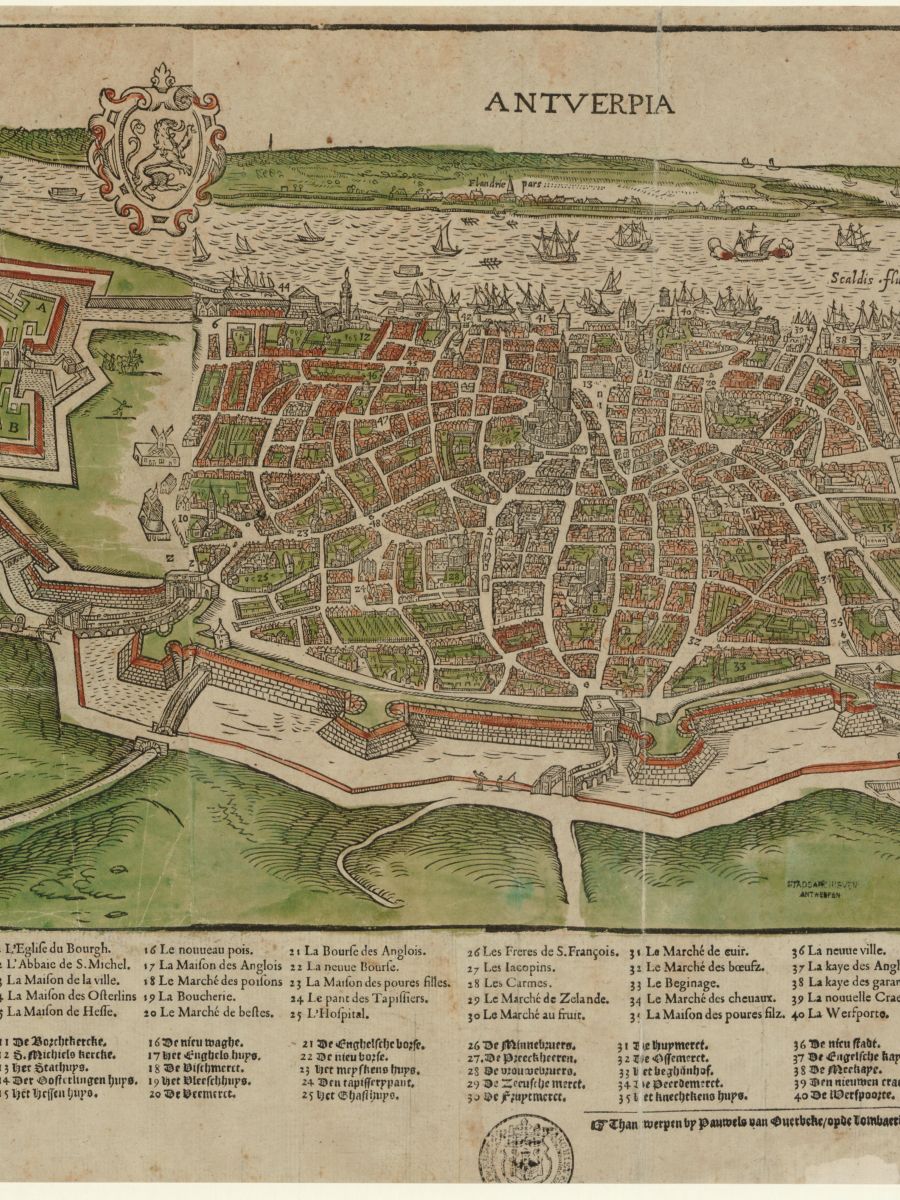Archaeological research Duke of Alva’s fortress

Duke of Alva’s fortress
The study was prompted by the building work being carried out in the garden area. The Fernando bastion, one of five bastions that formed part of the citadel’s defences, was located directly below the museum site. The fortress itself occupied the whole of what is now the Antwerp South district, from the River Scheldt to the Leien and from Marnixplaats to the Bolivarplaats.
It was constructed in 1567 on the order of King Philip II of Spain and the Duke of Alva. A bulwark connected the citadel to the Spanish ramparts. The citadel was built to repel attackers and to maintain control over the city. To local people, it was a symbol of oppression. The fortress was demolished in 1874.

From the city archive - 16th century map of the ramparts with citadel by Pauwels Van Overbeke.
The remains of the citadel’s main wall and the Fernando bastion have survived to a depth of five metres. They were clad in brick at the top and in stone below. The archaeologists also uncovered part of the artillery emplacements or casemates on the flank of the Fernando bastion – information that adds to their understanding of the city’s military history.

Excavations - The remains of the main wall of the citadel and of the Fernando bastion have been preserved up to five meters deep. Their facades are clad at the top in brick and at the bottom in natural stone. Photo: Karin Borghouts

Excavations - Top view of the archaeological excavations. Photo: Karin Borghouts
The find represents a unique piece of history, as few examples of 16th-century fortifications have survived in the Low Countries. All the data has been collated for reference during the planned and future works around the museum garden, as this unique heritage must naturally be handled with immense care. The relaying of the gardens will form part of the final phase of the museum renovation.


